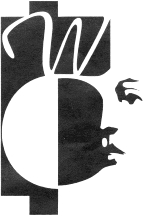



![]()
If You're Considering Breast Augmentation...
Throughout the ages, physical beauty has been determined by the values of each society. In our western culture during the late 1890's, for example, the large breasted woman with the small waist was the ideal. In the "flapper" era of the 1920's, women wanted slim bodies and very small breasts. Because an individual's body build is determined for the most part by generic influences, women may not be able to achieve the look they want through diet and exercise alone. Today, through modern technology, many women are able to alter the shapes of their bodies. Some with small, underdeveloped or asymmetrical breasts may choose to undergo breast augmentation, a safe, effective surgical procedure designed to improve the contour of a woman's body by implanting specially designed materials beneath the breast or chest wall muscles.
Breast augmentation is usually done to balance a difference in breast size, to improve body contour, or as a reconstructive technique following surgery. Incisions are made to keep scars as inconspicuous as possible, in the breast crease, around the nipple, or in the armpit. Breast tissue and skin is lifted to create a pocket for each implant. The breast implant may be inserted directly under breast tissue or beneath the chest wall muscle. After surgery, breasts appear fuller and more natural in tone and contour. Scars will fade with time.
The Breast consists of milk ducts and glands surrounded by fatty tissue, and covered by skin. The fatty tissue gives the breast its soft feel and shape. Skin elasticity also affects breast shape. Pregnancy (during which the milk glands are temporarily enlarged) and the inevitable effects of gravity over time stretch the skin envelope and change breast shape. The pectoralis major muscle lies beneath the breast, and indirectly affects breast projection. The pectoralis major muscle helps with flexing and rotation of the arm at the shoulder joint.
A breast implant consists of a silicone elastomer (rubber) shell now most commonly filled with saline solution (salt water). In 1992, the Food & Drug Administration (FDA) decided that more safety and effectiveness information was needed on the type of breast implant filled with silicone gel, and greatly restricted the use of these implants in the United States. Safety and effectiveness information on saline-filled breast implants is still being collected by McGhan Medical and other manufacturers through extensive clinical trials. In the meantime, the FDA has allowed saline-filled breast implants to remain available. In March, 1996, the FDA published a booklet called Breast Implants: An information Update that explains breast implant regulations and medical issues.
Most saline-filled breast implants share some standard features, like a silicone rubber shell and a valve for filling with saline solution. However, to better meet each individual woman's needs, breast implants come in different sizes.
Some implants are round, and some are anatomical. The shape of the implants you choose can affect the shape of your augmented breasts.
Round implants tend to provide more upper breast "roundness".
Anatomical implants tend to provide more upper breast "fullness".
Round implants are more likely to give you a round curve in the upper part of your breasts. Anatomical implants are more likely to give you a gentle slope in this area, because the top of the implant is shaped more like a natural breast.
Both types of implants can increase your breast size. Depending on the look you want to achieve, you may prefer one type of implant over the other.
An implant will add volume to your total breast tissue. For this reason, the larger you want your cup size to be, the larger the volume (measured in "cc's") of the implant Dr. Washak will consider. However, cup size may not be your only consideration.
Many women tend to think of their breasts in terms of bra cup size. For instance, if you're a 34 A now, you may know you would like to be about a 34 C after your augmentation. At the same time, you may have concerns about breast shape and proportions that bra cup size alone can't describe. You may know that you'd like to have a certain amount of cleavage , or more of an "hourglass" figure. You should discuss your personal preferences with Dr. Washak, so that he can take then into account in choosing the right implant size and shape for you. Dimensions like breast width, height, and projection describe breast shape, and may help both you and Dr. Washak think more specifically about the individual results that you want. For this reason, implant size can also be chosen based on dimensions.
Breast width is an especially important dimension, because it determines how much cleavage there is between your breasts. Breast width also determines the outside curve of your breasts, which you may want to increase to balance better with your hips. Dr. Washak will also evaluate your existing breast tissue coverage. If you do not have much breast tissue for coverage of the implant, Dr. Washak may warn you that if you go as large (in breast width) as you'd like to, you may risk having visible or palpable implant edges. You may even risk significant surgical complications.
Beyond any discussion of breast shape and size, Dr. Washak will want to evaluate your current physical health and health history before scheduling you for surgery. Breast augmentation is elective surgery. Before you proceed, you and Dr. Washak will have to decide whether the benefits of breast augmentation surgery out-weigh the risks in your case. If you have any condition that would compromise the healing process, or if surgery could jeopardize your condition, Dr. Washak may prefer not to operate until the condition is resolved. Infections, a history of poor wound healing, some medications, and even smoking may be reasons not to operate.
A fill kit is used to fill the implant with sterile saline, usually after the implant is placed in the surgical pocket.
The surgery will be performed in an operating room at a nearby hospital. The surgery is usually performed on an outpatient basis, not requiring an overnight hospital stay. General anesthesia is most commonly used, although local anesthesia may also be an option. Dr. Washak can discuss the choice of anesthesia with you in more detail. The surgery usually lasts one to two hours. Dr. Washak will make an incision and create a pocket for the implant. Then the implant will be place in the pocket, filled, and positioned. Finally, the incision will be closed with stitches, and possibly taped.
You'll probably feel somewhat tired and sore for several days following the operation, and your breasts may remain swollen and sensitive to physical contact for as long as a month. You may also experience a feeling of tightness in the breast area as your skin adjusts to your new breast size. The full results of your augmentation may not be visible until your breast tissue (and muscle, if the implant has been placed submuscularly) adjusts. If the implant is placed submuscularly, you may feel more discomfort for several days longer than if it is placed in the subglandular position. You may also have difficulty raising your arms above your head until you heal, and Dr. Washak may at first restrict your arm motion. The "tradeoff" is that submuscular placement may reduce the risk of complications later like severe contraction of the tissue capsule around the implant (called "capsular contracture"), visible or palpable implant edges, or interference with mammography.
Postoperative care is usually quite simple, perhaps involving use of a postoperative bra or jog bra for extra support and positioning while you heal. At Dr. Washak's recommendation, you will most likely be able to return to work within a few days, although you should avoid any strenuous activities that could raise your pulse and blood pressure for at least a couple of weeks.
Dr. Washak can tell you more about the usual recovery process, and may have other specific recommendations based on your individual case. If any unusual symptoms occur after surgery, such as fever or noticeable swelling or redness in one breast, you should contact Dr. Washak immediately.
Undergoing any invasive surgical procedure means running the risk of complications like the effects of anesthesia, infection, swelling, bleeding, pain, and delayed healing. In addition, there are potential complications specific to breast implants. These conditions include:
- Deflation of the implant;
- Interference with mammography;
- Contraction of the scar tissue capsule around the implant (capsular contracture);
- Replacement or revision surgeries;
- Calcium deposits in the tissue capsule around the implant;
- Changes in nipple and breast sensation;
- Shifting of the implant.
In addition to known complications, there are unanswered questions about whether silicone breast implants could increase you, or your child's, risk for connective tissue disorders. Studies so far have ruled out a large risk for such disorders, but for statistical reasons based on study size and methods, larger studies will be needed to rule out any risk.
Separate concerns have been raised about the unknown risk of breast implants and cancer. At this time, there is no scientific evidence that women with silicone breast implants are more susceptible to cancer than other women.
The FDA has published a summary of potential complications called Information for Women Considering Saline-Filled Breast Implants. You should thoroughly read and understand this information before deciding to proceed with surgery.
[ Home | Procedures |Contents |Dr.Washak |Feedback ]
Send mail to Caribe Enterprises, Inc. with questions or comments about this web site.
Copyright © 1997 Dr. Ronald V. Washak